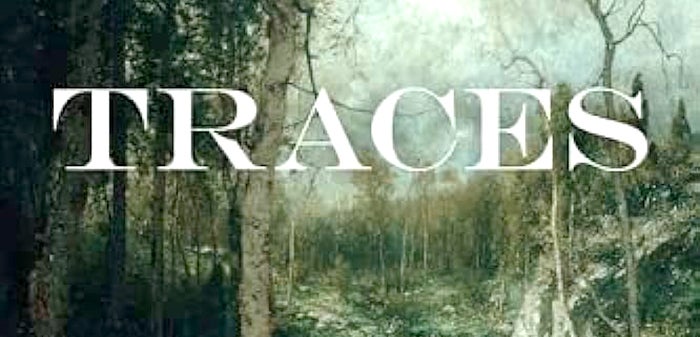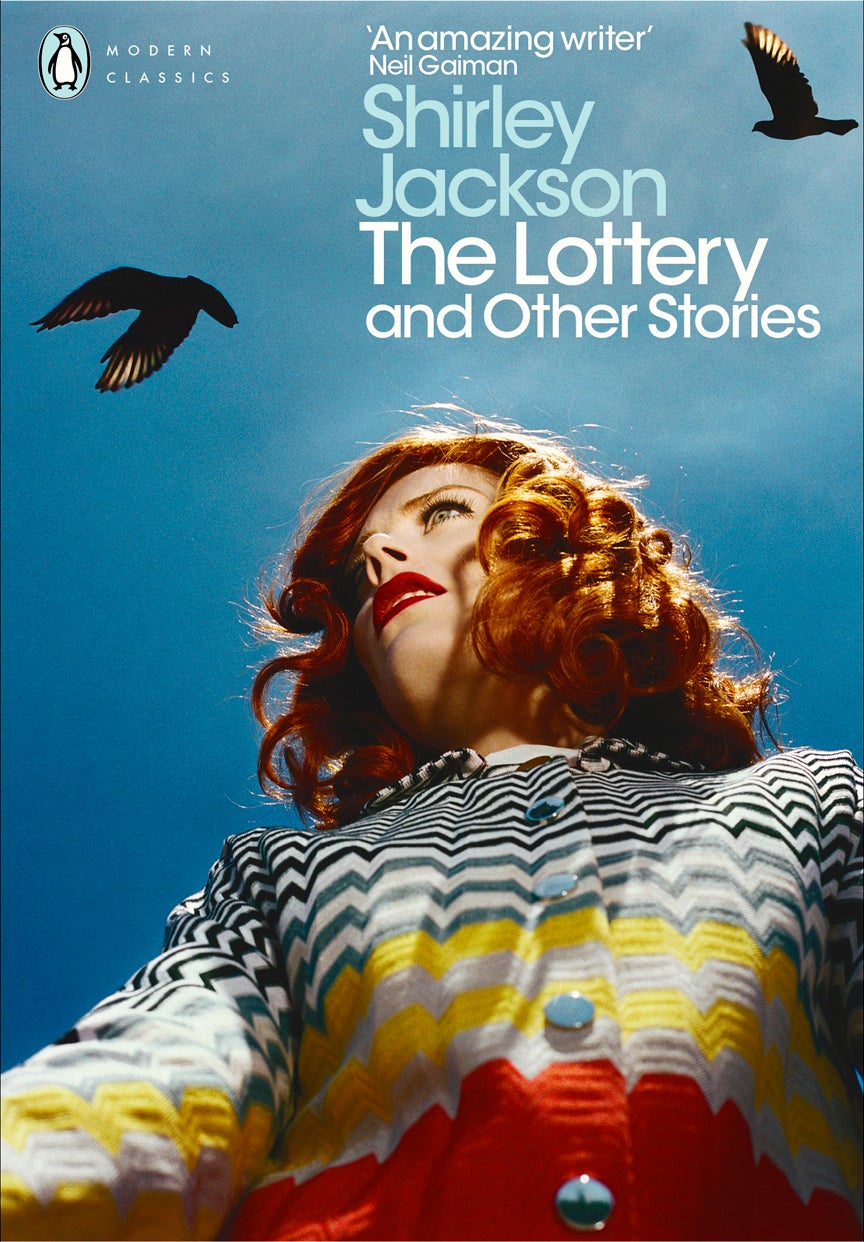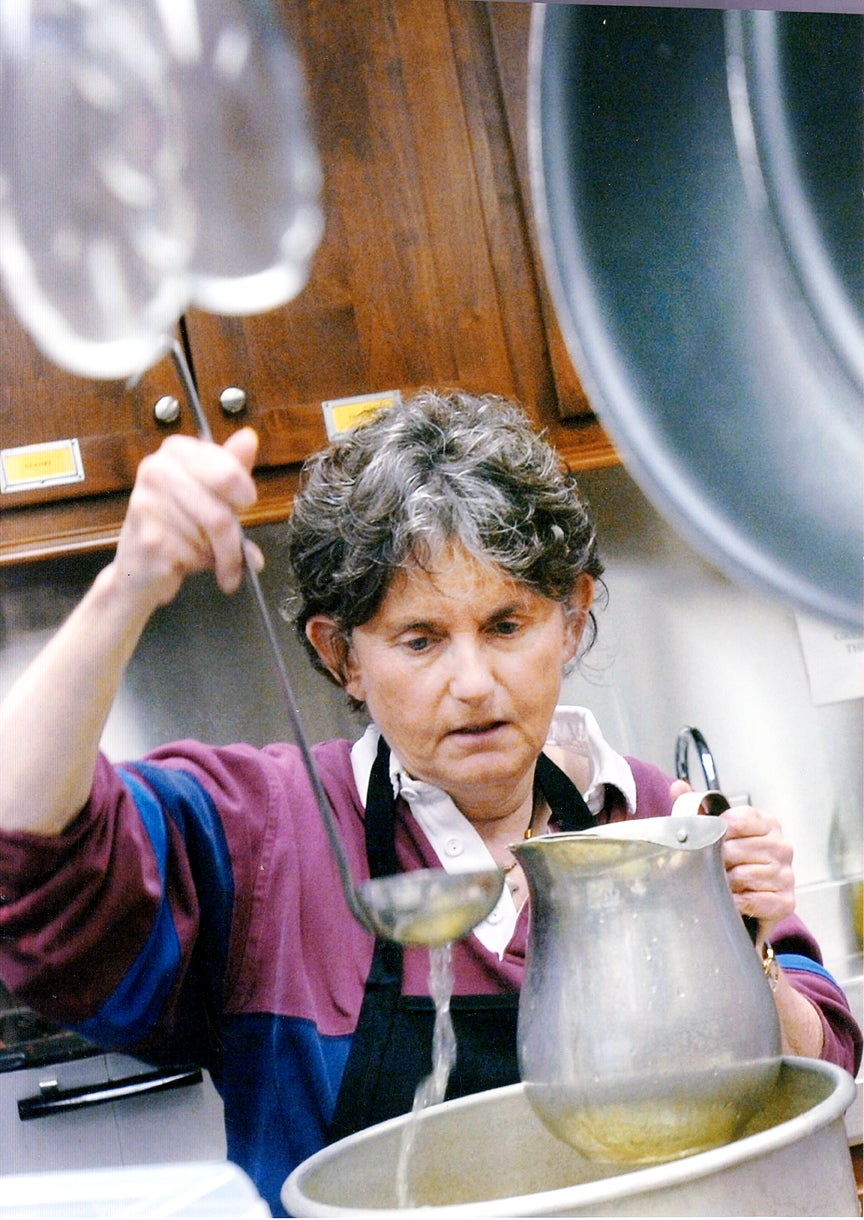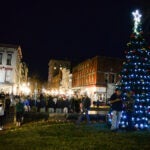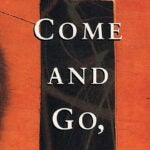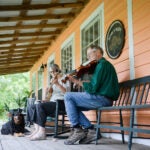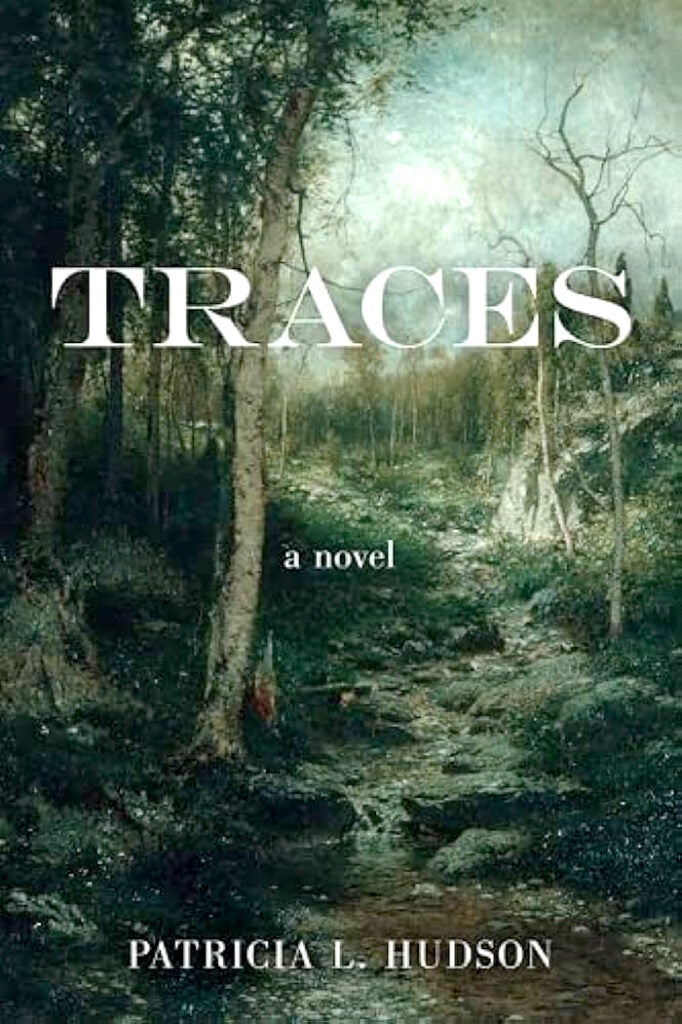
“Traces” by Patricia L. Hudson
Daniel Boone is undoubtedly one of the most iconic figures in the history of our nation’s westward expansion. As Kentuckians, we begin learning about the frontiersman in grade school. We are taught how he blazed the Wilderness Road through the Cumberland Gap, allowing for settlers to enter the land that would soon become Kentucky. I continued my study of Boone over the years, reading various biographies and even the famous Lyman Draper interviews of Nathan Boone (Daniel’s youngest son).
However, it always felt like something was missing. I was left wanting to know more about the women in these stories, their thoughts and their experiences. Unfortunately, more often than not, historical records tend to leave them out.
In her debut novel, “Traces,” Patricia L. Hudson offers a new perspective on this familiar narrative. A culmination of 25 years of research, she seamlessly blends fact with fiction to give voice to three of the Boone women — Rebecca (Daniel’s wife), Susannah and Jemima (their eldest daughters).
“Traces” begins in the year 1760 as Daniel, Rebecca and their young family prepare to leave their Yadkin Valley (North Carolina) home due to threats from the Cherokee. From the start, readers are given a look at what it means to be a woman on the American frontier.
Wives are often left to birth and rear children on their own — Rebecca had 10 children — while their husbands are away on long hunts, fighting in the military or exploring. Some are lucky to have nearby relatives or older children to lend a hand, but even then it can be a struggle to survive.
They are no longer looking after just the household. There are livestock to tend to and fields to be planted and harvested. Women, like Rebecca, are essentially abandoned for months or even years at a time, with no idea when or if their husbands will come home.
The Boones also relocated many times, temporarily settling in North Carolina, Virginia, Tennessee and the lands that became Kentucky and West Virginia, so it is difficult to put down roots. All the while, they experience the threat of violence as the indigenous tribes attempt to hold onto their native lands being inhabited by the settlers.
Through the eyes of the Boone women, readers can experience many historically notable events, as well as some that may be more mythological. We witness the kidnapping of Jemima and the Calloway sisters by the Shawnee, the settlement and subsequent siege of Boonesborough and the long-lasting effects of Rebecca’s rumored infidelity with Daniel’s younger brother, just to name a few.
Even though I was familiar with the history and chronology, I found myself excited to turn each page in order to see what would happen next. I couldn’t put it down!
This novel is the perfect example of what historical fiction should be. A must-read for Kentucky history buffs and fans of strong female characters. Highly recommend!
— Review by Paul Sawyier Public Library staff
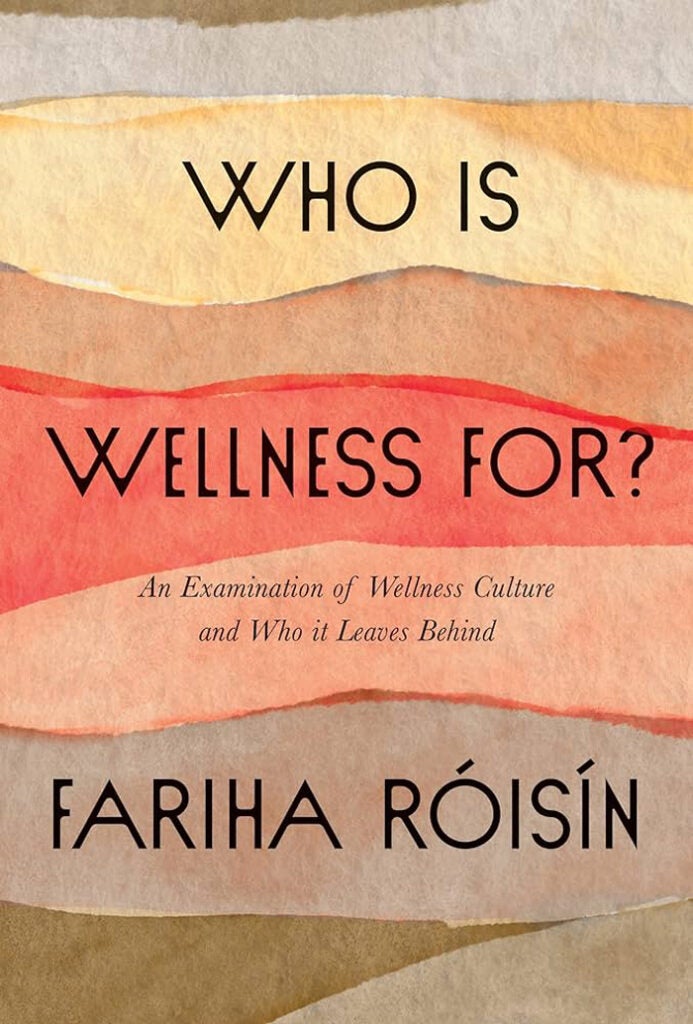
“Who Is Wellness For?: An Examination of Wellness Culture and Who It Leaves Behind,” by Fariha Róisín
Continuing on the topic of wellness, I picked up this book after seeing a video clip of the author talking in a New York bookstore. Róisín is a Bangladeshi Muslim who grew up in Australia and had a difficult and traumatic childhood. In working to heal herself and build a personal community, she learned that wellness is hard to come by when you don’t feel like you fit in.
In a similar vein to “American Detox” — my last review — this book examines the cruel and upsetting truths of who is permitted to find wellness and what white colonizers do to non-white cultural practices and ceremonies. I was surprised to learn that, when Britain occupied India, yoga was outlawed.
Nowadays, in contrast, we know that yoga is mostly for middle and upper class white women and the spirituality has been all but removed from the practice. Róisín uses the story of her journey to lift the veil on several healing rituals that have been whitewashed this way, and sheds some light on how to avoid appropriating — if not appreciating — the cultures from which they came.
— Review by Paul Sawyier Public Library staff

“The River We Remember” by William Kent Krueger
In the prologue, Krueger claims that “people fall in love too easily, and too easily fall out of love. But with the land, it’s different.”
Krueger begins this novel with a murder. The body was found floating in the Alabaster River. The river begins in Black Earth County, Minnesota, and runs across the southern state line into Iowa.
Every character in this novel has some connection with the river. They might have swum during the warm days of summer, or fished in the many pools or picnicked on its bank. Kreuger claims that if you visit at sunrise or sunset, you could see “small explosions of water where fish are feeding.” But the most aggressive fish are the Channel Catfish, which will eat anything, including the body of Jimmy Quinn.
Quinn happens to be the most disliked man in Black Earth County, but despite the numerous potential candidates for Quinn’s murder, Sheriff Brody Dern has arrested Noah Bluestone, a Native American World War II veteran who recently returned to work for Jimmy Quinn with his Japanese wife. According to everyone, Bluestone works hard but keeps to himself, not socializing with the town folk.
Sheriff Dern is also a highly decorated military veteran with demons that haunt him since his service. And strangely, the murder is discovered while the town celebrates Memorial Day.
The county’s only public defender, Charlotte Bauer, commonly known as Charlie, is asked to defend Bluestone. She begins questioning everyone connected to Bluestone, but his wife is unwilling to reveal any information about his relationship with Jimmy Quinn. Charlie also seeks information from Quinn’s current wife, and his former wife, but each refuses to cooperate with Charlie.
This novel is not only a murder mystery, but also a character study of the complicated relationships that develop in a small town. Perhaps more importantly, it is also a portrait of American life in mid-century and the healing of a community following a war that scarred not only the men that served, but their neighbors left behind.
— Review by Lizz Taylor, Poor Richard’s Books
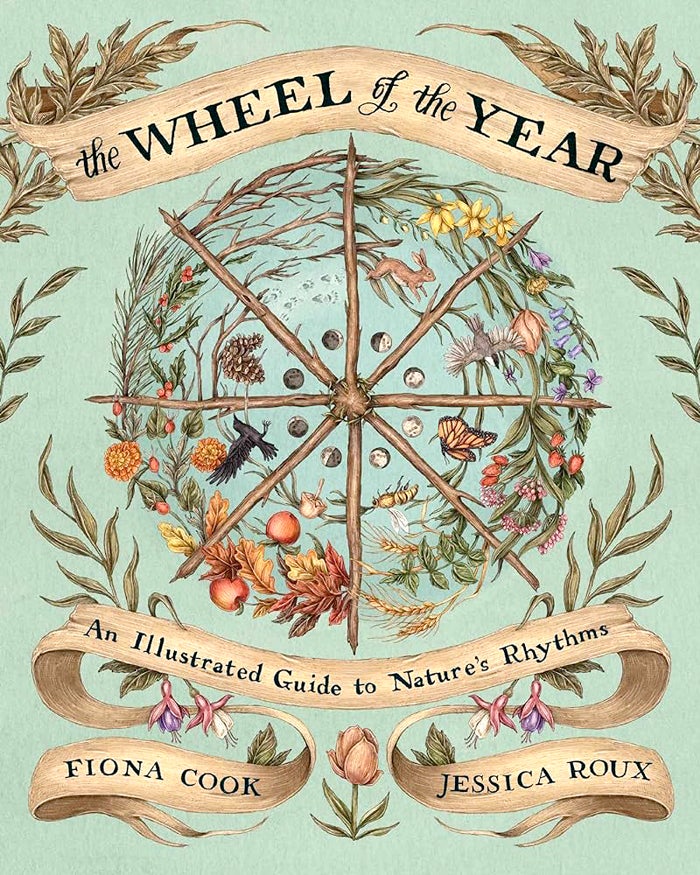
“The Wheel of the Year: An Illustrated Guide to Nature’s Rhythms” by Fiona Cook and Jessica Roux
This book, intended for young readers, celebrates the magic of the changing seasons of the year. Authors, Fiona Cook and Jessica Roux claim that “the magic is what connects one living thing to every other living thing.” The environment that surrounds us is alive, and we are part of it. In this book, they follow the cycle of the earth as it completes its one-year journey around the sun.
Safety rules are part of the introduction with a reminder to never be afraid to ask for help.
The year begins with Ostara, the awakening of spring or the vernal equinox. We like the caterpillar emerge from our wintry cocoons, to discover more daylight, birds, insects and blossoms. The authors suggest focusing on one small thing so that we are not pulled in so many directions by the changes around us. They suggest keeping a journal that could include how you feel in spring, poems, sketches, recipes, and even wishes for the year. In reviewing your journal, one might notice patterns, cycles and the rhythms of the season.
The authors also introduce celebrations of spring from other cultures. “Shunbu no Hi” is the Japanese celebration when people visit their ancestor’s graves, clean them and perhaps leave an offering of tea. “Nowruz,” or new day in the Middle East, is celebrated by cleaning homes and gathering together for food and music.
Another chapter suggests that it’s time to plant your garden. The authors recommend herb seeds planted in paper cups. Chamomile, mint and oregano grow in most places and can be useful ingredients in breads, scrambled eggs, as well as a soothing addition to a hot bath.
Cook and Roux also support a neighborhood cleanup with friends or family. Earth Day happens in April, but can be celebrated anytime. Of course, rubber gloves are a must! Perhaps you may find other signs of spring such as a feather or broken egg shell. These can be placed on your window sill to remind you of the magic of our natural world.
In the authors final words, they state, “You are the magic! You are strong, creative, and connected to all living things. You can shape your world for the better. Take care of yourself and all those you encounter.”
— Review by Lizz Taylor, Poor Richard’s Books

